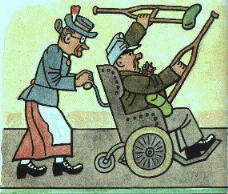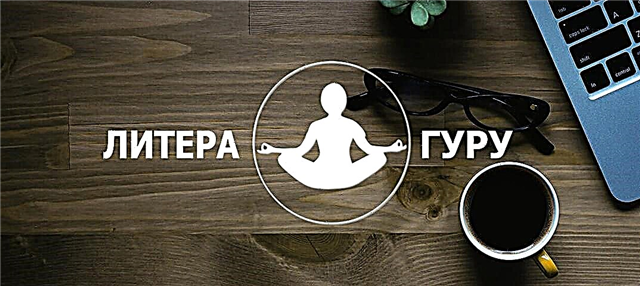Myth: A brave entrepreneur with a great idea and technical know-how will quickly become successful.
When processing information, we come across several thoughts at the same time: emotional, informational, logical, creative and future-oriented. Trying to process everything at once is like juggling too many balls.
The solution is the six-hat method. Each hat has its own color (white, red, black, yellow, green or blue), which means a certain type of thinking. How can this come in handy?
Example. Suppose you are a manager and want to know the emotional reaction of your team to an event. But people are afraid when judged by their emotions, and prefer to hide them. You can say: "Let's try to put on a red hat." She will allow the team to think emotionally, not embarrassed by their feelings.
The six-hat method ensures that the group will think in the same context. Each point of view is a separate hat. To view the topic from a single angle, everyone should wear the same hat.
Six hats allow the team to engage in parallel thinking, in which everyone looks at the problem from one perspective.
Follow Six Hats Guidelines
There are two ways to wear hats: one at a time and one at a time.
To use hats alone means to concentrate on a certain type of thinking.
Example. When during the discussion you need a sip of fresh thoughts, just say: "I think we need to wear green hats." If people are taught terminology and the use of hats, they will correctly respond to the request.
When hats are used in turn, wear them as often as you like and in any order, depending on what you want to achieve.
Example. The leader can ask the group to switch from white to yellow hat and completely abandon the red!
Regardless of the method, consider discipline and timing.
- Group members must maintain discipline: use only the selected hat. Only the team leader, chairman or coordinator has the right to change it. With the advent of experience, maintaining discipline becomes easier.
- When wearing a hat, it is important to maintain a set time frame in order to stimulate focus and eliminate ranting. The author recommends spending one minute for each person in the hat. Example: If four people are participating, you will have to spend four minutes on each hat.
We will study in detail the functions of each of the hats.
White hat means searching for data and information
Imagine that you are a computer performing calculations and presenting facts in a neutral, objective manner. You have not been programmed to interpret them. You only care about the facts. This is thinking in a white hat.
A white hat is needed to discuss available information and identify the necessary information. In this hat you do not care about other people's opinions, but only facts and figures. There is no discussion, and even if the facts contradict each other, you treat them the same way.
When should you wear a white hat?
- When you need to lay the foundation for a discussion by providing background information. Example. The head of marketing wants to review the current strategies of the company. He can start the meeting with a white hat to voice important indicators, such as the budget of existing strategies.
- At the end of the discussion, to summarize or confirm that the proposals are consistent with the information available.
- To search for alternatives when offers contradict available information.Having considered a new strategy that exceeds the budget, the head of the marketing department may request additional information (available number of man-hours).
With a white hat, you understand what information you have and what data is missing.
White color indicates neutrality. In a white hat, try to be objective and stick to “bare” facts, such as statistics.
Be honest in your emotions when wearing a red hat
The opposite of neutrality and objectivity is a red hat, symbolizing fire and heat. Get ready for a splash of emotions!
The red hat allows team members to express their feelings and turn to their own intuition without explanation or excuse.
Intuition is based on experience, so even the words “I feel it’s risky” can be useful. But intuition is not always accurate; treat it with caution.
Different emotions can be expressed in a red hat: delight, indecision, discontent, etc. But the emotions must be clear. If a person says that he has “mixed feelings”, ask him to clarify which ones. This is not easy, because in every culture people express feelings in their own way.
Example. In the United States, a person can directly express dissatisfaction (“This idea is no good!”), But in Japan such feelings sound more restrained (“I have to think it over”).
It is important that the leader does not ask to explain or justify his feelings, otherwise people will express only those that can justify. Let the person just talk about how they feel at the moment.
The discussion in the red hat implies the participation of each member of the group. No passes or concessions. The group should listen carefully to everyone so that the person feels the importance of their feelings. Any emotions should not be condescending or condemned. In a red hat, everyone has the right to honestly express their attitude to the topic.
A black hat warns you of impending danger
Imagine that you put on the judge’s black clothes and preside over the murder case. You are responsible for a thorough assessment of all evidence, because the life of the defendant hangs in the balance. Wearing a black hat, you act within the law, point out difficulties and problems, and adhere to values and ethics.
A black hat implies forethought. It protects us from mistakes that are contrary to our interests (for example, from making illegal, dangerous or unprofitable decisions).
We base our decisions on experience using the inherent mechanism of non-compliance. As animals learn that berries are poisonous based on inherited experience, the survival of your company depends on what kind of fruit it decides to reap.
You can avoid such mistakes with the help of a black hat: it will help to find elements of politics, strategy, ethics, etc., that contradict each other. But don't let the black hat make you overly cautious.
Some people are fixated on identifying flaws.
Example. We know that food is necessary for life, but an excessive amount will increase our weight, which will lead to health problems and even death. The black hat acts in a similar way: it is necessary for making decisions, but the main thing is not to overdo it.
The advantage of the six-hat method is the ability to find balance by paying attention to each hat.
The yellow hat allows you to play the role of an incorrigible optimist
Have you ever thought that absolutely everything is fine? What a blessing in disguise? A yellow hat implies just such optimism and orientation to potential benefits.
The yellow hat is harder to master than the black one, because our mind tends to warn us against danger.
To learn how to find positive moments in any situation, you need to learn to understand that even in the most unattractive idea has its own value.
The yellow hat is very important, because the benefits of the idea are not always noticeable immediately, and trying to achieve such unobvious goals is considered a waste of time.
Example. The yellow hat needs to consider how a new marketing plan can change the brand image and attract new customers. Otherwise, what is its meaning?
The positiveness of the yellow hat should be logically justified. The desire to find value does not mean that you need to deceive yourself. A yellow hat allows you to express your visions and dreams, but reality must prevail over fantasy.
Example. With a yellow hat, you don’t need to fantasize about how your new marketing plan will help keep the company and make you a billionaire. Think about what positive results your plan will actually achieve.
The yellow hat asks these questions:
- What are the possible values of this idea?
- To whom will they benefit and under what circumstances?
- How will the value be provided?
- Are there any additional hidden values?
If the idea is promising and logical, a yellow hat will help motivate your team.
Green hat is an opportunity for the most unusual ideas.
It's time to get creative! Green hat - the search for new ideas, concepts, options and alternatives, both obvious and fresh, unusual. To put on a green hat means to open up to any possible improvements and consider crazy alternatives!
A green hat allows you to think through possible results. Without a creative vision of the future, progress can come to a standstill.
Example. Two thousand years ago, Chinese technology was more advanced than Western. But since then, their technological progress seems to have stopped. Why? It is believed that the Chinese have stopped there. They did not dream about future opportunities, and now they are unable to find an incentive for progress.
A green hat is also used to overcome the difficulties encountered in the discussion in a black hat. Perhaps the black hat helped you identify the main dangers in the new strategy, but the green hat will allow you to creatively avoid the dangers or develop completely new ideas.
Remember that creativity is not the prerogative of one "creator" in a team. Everyone can put on a green hat and prove themselves. To do this, you need to properly manage expectations from your group. People do well what is expected of them. Under the right conditions, wearing a green hat, everyone (even those who have never considered themselves creative) will begin to be creative. As confidence grows, so will the number of creative ideas.
The blue hat is the constant control of the process.
The blue hat is for "thinking about thinking." Like a hawk soaring into the sky to inspect the fields beneath, a man in a blue hat seeks to get an idea of the work of other hats.
A blue hat is used at the beginning of the discussion to determine its purpose. It will help identify the specific problem you need to solve, or the criteria for your brainstorming.
In a blue hat, you are thinking over which hats will be needed in solving problems. Perhaps the discussion will require more red and green hats, or black and white. In any case, this is determined by the person in the blue hat.
The blue hat is worn by the facilitator, chair or discussion leader. This is an ongoing role, and the group leader should not take off his hat during the discussion. In a special discussion, when everyone puts on a blue hat, anyone can make a proposal.
During the discussion, the blue hat helps maintain discipline in the group, informs when it is time to change hats, and makes sure that everyone puts on the red hat. In the end, the blue hat asks to announce the results (in the form of conclusions, conclusions, decisions, etc.).
The blue hat also indicates further actions that need to be taken after the discussion: the next steps in the project or topics for future meetings.
Six hat method saves you time and money
Why is the six-hat method useful?
Time saving. One man argued with his wife for a long time whether to buy a large country house. Seeing the Six Hats Review in the Financial Times, they decided to apply it. Dividing the elements of discussion into actual, creative, emotional, etc.), they came to a satisfactory solution in just ten minutes. A large ABB corporation usually spent 20 days discussing projects before achieving any results. With the six-hat method, these discussions last only two days!
Saving money. Statoil, a Norwegian oil and gas company, had problems with an oil rig, which cost her $ 100,000 a day. A professional consultant introduced them to the six-hat method, and the company came to a decision in just 12 minutes.
Six hats method relieves stress in discussions. Imagine you are driving in a car with three people, but no one knows the road for sure. Surely there will be a lot of controversy that will only exacerbate the problem. But if you have a map, it is much easier to choose the optimal route, which will be obvious to everyone. The six-hat method gives you such a "map."
The most important thing
Thinking is a skill that can be developed! With the six-hat method, you can think more efficiently, solve problems, and develop creative solutions. You will stop wasting valuable energy and become a victim of disorganized and chaotic thinking.
Do not forget to change hats during the discussion and keep track of discipline and time.
Start a discussion in a white hat - collect and review the available facts, statistics, conditions. Discuss the data in a negative way, that is, in a black hat. A fly in the ointment, as a rule, is always there, and it must be seen. But do not forget about the positive aspects - put on a positive yellow hat. Wear a green hat to find something new. Let each participant suggest an alternative path. And let the participants let off steam in a red hat.
Remember that each group has its own hat application.
When trying to put on six hats of thinking in a different sequence, over time you will determine the most appropriate sequence. You can use the method in another way - let each participant put on a hat of a certain color and play a role.












